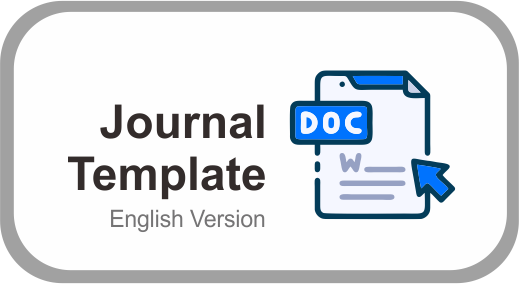Contact Us Author Guidelines Peer Review Process Reviewers Focus and Scope Publication Ethics Copyright Notice Right and Licenses Scientific Statement Article Processing Charges Journal History Archiving Policy Open Access Policy Indexing
Peer Review
The IAS Journal of Localities follows a fast, fair, and rigorous Double-Blind Review process to ensure the publication of high-quality articles. In this system, both reviewers and authors remain anonymous. The anonymity of the authors prevents reviewer bias based on factors such as affiliation, country of origin, or previous controversial works by the author. The IAS Journal of Localities only publishes articles that have been approved by qualified researchers with expertise in the relevant field, requiring a minimum of two reviewers per article. All manuscripts submitted to the IAS Journal of Localities will undergo the peer-review process. If your manuscript passes the initial editorial screening, it will then be sent to reviewers. All manuscripts will be reviewed by at least two experts under the Double-Blind Review system, where both the reviewers' and authors' identities remain confidential. The review process typically takes 2-4 months. Articles accepted with minor or major revisions must be revised according to the reviewers' comments and suggestions. The main characteristics of the peer-review process for all research articles published in the IAS Journal of Localities are outlined below:
1. Two-Stage Review Process: After a technical check, your manuscript will undergo an initial review by the editorial team to assess its suitability for publication in the journal. If deemed appropriate, the manuscript will be assigned to one of the editors for the review process and decision-making.
2. Reviewer Assignment: If your manuscript aligns with the scope and meets the criteria of the IAS Journal of Localities, it will be forwarded to the Editor. The Editor will identify and contact two reviewers who are recognized experts in the relevant field. Since peer review is a voluntary service, it may take some time; however, the Editor will periodically remind reviewers to ensure timely responses. During this stage, the manuscript’s status will be labeled as "Under Review."
3. Review Completion: Once the Editor has received the minimum required expert reviews, the status will change to "Review Completed."
4. Editorial Decision: There is a possibility that the Editor may determine that your manuscript does not meet the journal’s criteria or scope and does not require further consideration. In such cases, the Editor will promptly inform you that the manuscript has been rejected and may recommend a more suitable journal.
Referred Paper Review Process:
The Editor of the IAS Journal of Localities will promptly decide whether to accept, reject, or request revisions for referred papers based on the review and editorial insights of the supporting journal. The Editor also has the option to seek additional reviews if necessary. Authors will be informed when the Editor decides that further review is required. The Editor will first review the submitted article for adherence to the topic and writing style guidelines. All manuscripts undergo a double-blind peer review, where the identities of both the reviewers and authors remain confidential during the review process to maintain academic excellence. The steps in the process are as follows:
1. Manuscript Submission: (by the author)
2. Manuscript Screening and Selection: (by the manager and editor)
3. Initial Editorial Review: The editor has the authority to accept, reject, or directly review the manuscript. Before proceeding to the next step, each manuscript will undergo a plagiarism check using Turnitin.
4. Manuscript Review Process: (by reviewers)
5. Notification of Acceptance, Revision, or Rejection: (by the editor to the author based on reviewers’ comments)
6. Manuscript Revision: (by the author)
7. Submission of Revised Manuscript: (by the author) following a process similar to step 1.
8. Final Review and Acceptance: If the reviewers are satisfied with the revisions, the editor will notify the author of the acceptance of the revised manuscript.
9. Proofreading and Publication Process.
The steps from points 1 to 5 constitute one round of the peer-review process. The Editor or editorial board evaluates the feedback provided by the peer reviewers and makes a decision. The most common decisions are as follows:
1. Accepted as is: The journal will publish the paper in its original form.
2. Accepted with Minor Revisions: The journal will publish the paper after the author makes minor corrections within a specified time.
3. Accepted with Major Revisions: The journal will publish the paper provided that the author makes the changes suggested by the reviewers and/or editor within a specified time.
4. Resubmission Required (conditional rejection): The journal is willing to reconsider the paper in the next round of decision-making after the author makes significant changes.
5. Rejected (outright rejection): The journal will not publish the paper or consider it even if the author makes major revisions.
The decision to accept for publication, amend, or reject a manuscript will be made by the Editor based on the reviewers' comments or recommendations. In certain cases, if necessary, the Editor may send the manuscript to another reviewer for a second round of review before making a decision. The publication of accepted manuscripts, including the order of published papers, will be managed by the Editor-in-Chief, considering the order of receipt, the geographical distribution of authors, and thematic issues. Typically, the process from submission to publication takes approximately 7 months to 1 year, with an average of 6 months. Through this rigorous peer review process, the IAS Journal of Localities ensures that published research meets the highest standards of scientific integrity and quality.














